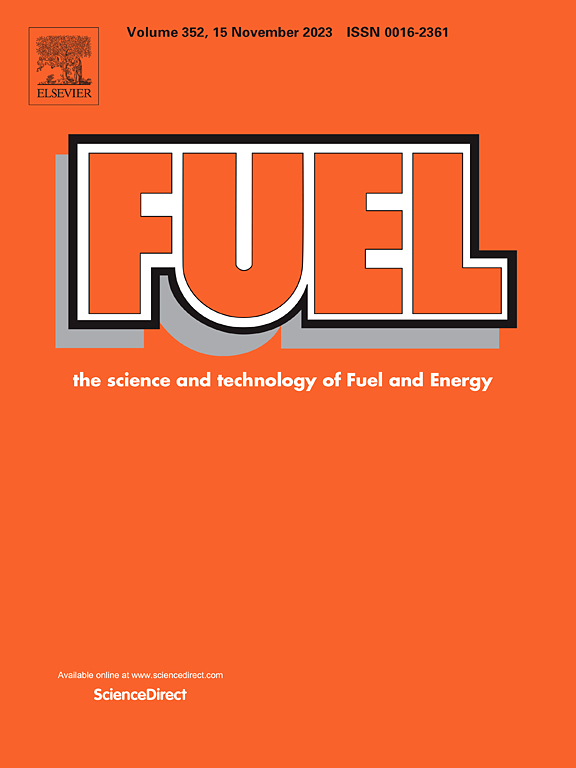Analyzing lump coal gas release as a source of coal mine methane: Using GC and machine learning
IF 7.5
1区 工程技术
Q2 ENERGY & FUELS
引用次数: 0
Abstract
Recent advancements in coalbed methane (CBM) applications have facilitated methane capture and utilization as an energy source from coal seams before exploitation. CBM applications reduce the amount of coal mine methane (CMM) released underground during mining operations. However, during coal exploitation, the fractured coal releases lump coal gas, which often contains a high methane concentration. This lump coal gas cannot be prevented with CBM practices and contributes to the formation of CMM along with seam and strata gases. In this study, the mechanism of lump coal gas components CH4, CO2, and CO were evaluated by analyzing the particle size, time, and location of the coal lump. In this sense, coal samples of varying sizes and from diverse locations were sealed in airtight canisters, and changes in gas concentrations over time were analyzed at regular intervals using gas chromatography (GC). The changes in the air gap in the canisters and coal samples lead to manipulations in the direct analysis of GC results. Therefore, initially, within the scope of feature engineering, an release index feature was developed, representing the ratio of the amount of each released gas to the weight of the sample, enabling an investigation among varying sample sizes. Using the developed index, time-dependent polynomial models for methane release were developed for various coal sizes. The results of these models were then analyzed using the k-means clustering algorithm to investigate the changes due to coal location. The analyses indicate that from the moment coal is first fractured, CO and CO2 gases are consistently higher in larger coal particles. However, methane (CH4) release per unit mass are initially higher from smaller particles, but over time, methane releases from larger particles become more significant than from smaller particles. On the other hand, initially, the change in methane release based on particle size is not very pronounced, and only clustering can be achieved with a 0.45 F1 score. However, over time, the size-dependent change becomes more significant, with smaller samples releasing less methane compared to larger samples, leading to an increase in the F1 score up to 0.94.
分析煤块瓦斯释放作为煤矿甲烷的来源:使用气相色谱和机器学习
煤层气(CBM)应用的最新进展促进了煤层气在开采前作为能源的捕获和利用。煤层气的应用减少了开采过程中释放到地下的煤矿甲烷(CMM)的量。然而,在煤炭开采过程中,裂隙煤释放出块状煤气,块状煤气中往往含有高浓度的甲烷。这种块状瓦斯是煤层气实践无法阻止的,它与煤层瓦斯和地层瓦斯一起形成了煤层气。本研究通过分析煤块的粒度、时间和位置,对块煤气体组分CH4、CO2和CO的形成机理进行了评价。从这个意义上说,来自不同地点的不同大小的煤样品被密封在密封罐中,并使用气相色谱法(GC)定期分析气体浓度随时间的变化。气相罐和煤样品中气隙的变化导致气相色谱结果的直接分析被操纵。因此,最初,在特征工程的范围内,开发了一个释放指数特征,表示每种释放气体的量与样品重量的比率,从而能够在不同的样本量中进行调查。利用所建立的指数,建立了不同煤种的甲烷释放随时间变化的多项式模型。然后使用k-means聚类算法对这些模型的结果进行分析,以研究煤炭位置引起的变化。分析表明,从煤第一次破裂的那一刻起,较大的煤颗粒中CO和CO2气体一直较高。然而,单位质量的甲烷(CH4)释放最初来自较小的颗粒,但随着时间的推移,来自较大颗粒的甲烷释放比来自较小颗粒的甲烷释放更显著。另一方面,在初始阶段,基于粒径的甲烷释放变化不是很明显,只能以0.45 F1得分实现聚类。然而,随着时间的推移,大小依赖性的变化变得更加显著,较小的样本释放的甲烷比较大的样本少,导致F1得分增加到0.94。
本文章由计算机程序翻译,如有差异,请以英文原文为准。
求助全文
约1分钟内获得全文
求助全文
来源期刊

Fuel
工程技术-工程:化工
CiteScore
12.80
自引率
20.30%
发文量
3506
审稿时长
64 days
期刊介绍:
The exploration of energy sources remains a critical matter of study. For the past nine decades, fuel has consistently held the forefront in primary research efforts within the field of energy science. This area of investigation encompasses a wide range of subjects, with a particular emphasis on emerging concerns like environmental factors and pollution.
 求助内容:
求助内容: 应助结果提醒方式:
应助结果提醒方式:


